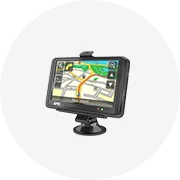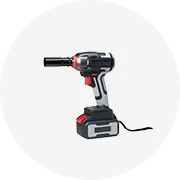Types of Universal OBD2 Scanner
An universal OBD2 scanner is designed to interface with the majority of vehicles equipped with an OBDII port. These diagnostic tools help identify issues within a vehicle's systems by reading error codes from the onboard computer. Below are the main types available in today's market:
Handheld OBD2 Scanners
The most basic type of diagnostic tool, ideal for DIY enthusiasts and car owners looking to perform simple diagnostics.
- Small and portable design
- Basic LCD screen with simple interface
- Limited diagnostic capabilities
- Primarily reads and clears error codes
- Most affordable option
Best for: Basic home diagnostics and DIY car maintenance
Wireless OBD2 Scanners
Modern diagnostic tools that connect to your vehicle and communicate with your smartphone or tablet.
- Uses Bluetooth or Wi-Fi connectivity
- Compact, low-profile design
- Interfaces with smartphone apps
- Access to real-time data and updates
- Less obtrusive when plugged in
Best for: Tech-savvy users who prefer mobile integration
Professional-Grade Scanners
Advanced diagnostic tools designed for automotive professionals and mechanics.
- Large, detailed display
- Comprehensive diagnostic functions
- Live data streaming capabilities
- Bi-directional control features
- Advanced system diagnostics (ABS, airbags, etc.)
Best for: Professional mechanics and advanced diagnostics
Pro Tip: Launch OBD2 scanners are a recognized brand known for their advanced technology and reliable diagnostics. They offer comprehensive vehicle analysis capabilities and are widely used by professional mechanics for their accuracy in troubleshooting vehicle issues.
| Scanner Type | Price Range | Best For | Key Features |
|---|---|---|---|
| Handheld | $30-$100 | DIY enthusiasts, basic diagnostics | Code reading/clearing, basic data display |
| Wireless | $20-$150 | Mobile users, casual diagnostics | Smartphone integration, compact design |
| Professional | $150-$1000+ | Mechanics, auto shops | Advanced diagnostics, system-wide testing |
| Launch Brand | $100-$2000+ | Professional technicians | Programming, coding, comprehensive diagnostics |
Specifications & Capabilities of Universal OBD2 Scanners
The specifications of an OBD2 scanner determine its performance and ability to diagnose vehicle issues effectively. Understanding these key specifications will help you select the right tool for your needs.
Data Stream
Live feed of information about various vehicle systems, allowing real-time monitoring of:
- Engine temperature and performance metrics
- Sensor readings from throughout the vehicle
- System actuations and responses
- Performance parameters not triggering fault codes
Compatibility
The scanner's ability to work with different vehicle makes and models:
- Most universal scanners work with vehicles made after 1996
- Some scanners are brand-specific or have enhanced functionality with certain manufacturers
- Premium scanners offer wider compatibility with global vehicle brands
- Always verify compatibility before purchasing
Power Source
How the scanner receives power for operation:
- OBD port-powered scanners (most common)
- Battery-powered scanners (greater portability)
- USB-connected scanners (computer required)
- Rechargeable scanners (for extended use)
Display
The visual interface that presents diagnostic information:
- Small monochrome displays (basic models)
- Large color displays (professional models)
- Touchscreen interfaces (premium scanners)
- Smartphone/tablet integration (wireless models)
Functionality
The diagnostic capabilities and features offered:
- Basic code reading and clearing
- Manufacturer-specific code access
- Advanced system diagnostics (ABS, SRS, etc.)
- Actuator testing and system resets
- ECU programming and coding
Connectivity
How the scanner connects to vehicles and other devices:
- Direct OBD-II port connection (wired)
- Bluetooth connectivity (wireless to mobile)
- Wi-Fi integration (network capabilities)
- PC connectivity for advanced analysis
OBD2 Scanner Maintenance
Proper maintenance ensures your OBD2 scanner remains accurate, reliable, and has a longer operational life. Follow these essential maintenance practices:
| Maintenance Task | Frequency | Procedure | Importance |
|---|---|---|---|
| Cleaning | After each use | Use soft cloth and mild cleaning solution to remove dirt and debris | High |
| Software Updates | Quarterly | Check manufacturer's website for firmware updates and new vehicle coverage | Critical |
| Proper Storage | When not in use | Store in a protective case in a cool, dry place away from extreme temperatures | Medium |
| Cable/Connector Inspection | Monthly | Check for wear, damage, or fraying and replace if necessary | High |
| Battery Maintenance | As needed | For battery-powered units, follow proper charging practices | Medium |
| Moisture Protection | Always | Keep away from liquids and high humidity environments | Critical |
Important: Always disconnect your scanner properly from the vehicle after use. Abruptly removing it while diagnostics are running may damage both the scanner and potentially the vehicle's computer system.
How to Choose a Universal OBD2 Scanner
Selecting the right OBD2 scanner requires careful consideration of several factors to ensure it meets your specific needs and provides value for your investment.
For DIY Enthusiasts
Focus on user-friendly interfaces and basic diagnostic capabilities:
- Code reading/clearing functionality
- Affordable price point ($30-$100)
- Compatibility with your specific vehicle
- Easy-to-read display with clear instructions
- Basic live data capabilities
For Professional Mechanics
Prioritize comprehensive diagnostics and advanced features:
- Wide vehicle compatibility
- Advanced system diagnostics beyond engine codes
- Bi-directional controls and actuator testing
- Programming/coding capabilities
- Robust build quality for daily use
For Business Buyers
Consider long-term value and customer support:
- Free or affordable software updates
- Multiple vehicle brand coverage
- Extended warranty options
- Technical support availability
- Training resources for staff
Key Selection Criteria
Compatibility
Ensure the scanner works with your vehicle makes and models. Choose scanners with updated software to access a wide range of car systems.
Functionality
Determine which diagnostic functions you need based on your skill level and requirements: basic code reading, live data, advanced diagnostics, or programming capabilities.
Build Quality & Durability
Invest in a scanner with robust construction that will withstand regular use, especially for professional environments.
Ease of Use
Consider the interface, display quality, intuitive navigation, and whether a built-in battery is included for convenience.
Portability
Evaluate the scanner's size, weight, and wireless connectivity options if you need to use it in various locations.
Update & Support
Check the manufacturer's update policy, warranty terms, and customer support reputation before making your final decision.
How to Use an OBD2 Scanner: DIY Guide
Most diagnostic scanners are designed for ease of use, allowing vehicle owners to perform basic diagnostics at home. Follow these steps to effectively use your universal OBD2 scanner:
Locate the OBD2 Port
The OBD2 port is typically found under the dashboard on the driver's side, within 2 feet of the steering wheel. In some vehicles, it may be behind a small access door or near the center console.
Tip: If you have trouble finding it, consult your vehicle's owner manual for the exact location.
Connect the Scanner
With the vehicle's ignition turned off, firmly plug the scanner's connector into the OBD2 port. Ensure it's securely seated for a reliable connection.
Important: For wireless scanners, follow the manufacturer's instructions to pair with your mobile device.
Turn on the Vehicle
Turn the ignition key to the "ON" position (the dashboard lights should illuminate) without starting the engine. This powers up the vehicle's electrical systems and the connected scanner.
Note: Some scanners may require the engine to be running for certain diagnostic functions.
Scan for Diagnostic Trouble Codes
Navigate to the "Scan" or "Read Codes" function on your scanner and initiate the diagnostic process. The scanner will communicate with the vehicle's computer to retrieve any stored trouble codes.
Result: If no issues are detected, the scanner will display "No Codes" or "System Pass."
Interpret the Codes
Review any trouble codes displayed by the scanner. Most scanners provide a brief description of each code. For more detailed information, refer to the scanner's manual or look up the specific code online.
Example: P0301 typically indicates a cylinder 1 misfire.
Clear Codes (If Necessary)
After addressing the underlying issue, use the "Clear Codes" or "Erase Codes" function to reset the vehicle's check engine light and remove stored codes from the computer.
Caution: Only clear codes after repairing the problem. If the issue persists, the code will return after driving the vehicle.
Advanced Tip: After clearing codes, drive the vehicle for several days under various conditions and then rescan to confirm the problem has been resolved. Some issues only appear under specific driving conditions.
Frequently Asked Questions
OBD1 is the first generation of on-board diagnostics developed in the early 1980s. It had different versions across manufacturers, making universal scanners impossible. OBD2 is the second generation introduced in the mid-1990s and established as a global standard. It uses a standardized connector and communication protocol across all vehicle makes, allowing universal OBD2 scanners to work across different brands and models.
No, most vehicles manufactured before 1996 do not have OBD2 systems. They typically use the older OBD1 system or proprietary diagnostic systems. OBD2 became mandatory for all vehicles sold in the United States starting in 1996, and this standard was later adopted worldwide. If you own a pre-1996 vehicle, you'll need a scanner specifically designed for OBD1 systems or for your specific vehicle make.
This depends on the specific OBD2 scanner model:
- Basic scanners: Generally only read engine-related codes
- Mid-range scanners: May read some additional systems like transmission
- Advanced/professional scanners: Can typically read ABS, airbag (SRS), transmission, body control modules, and other systems
If diagnosing ABS or airbag systems is important to you, verify that the scanner specifically mentions these capabilities before purchasing.
The "most reliable" OBD2 scanner varies based on your specific needs, budget, and vehicle compatibility requirements. Some widely respected brands include:
- Autel: Known for comprehensive diagnostics and regular updates
- Launch: Offers advanced features and strong vehicle compatibility
- Foxwell: Provides good value with reliable performance
- Innova: Popular for DIY users with user-friendly interfaces
- BlueDriver: Well-regarded wireless scanner with excellent app integration
For professional use, higher-end Autel and Launch models are often preferred. For casual DIY use, BlueDriver or Innova models offer good reliability at lower price points.
A universal OBD2 scanner is designed to work with most vehicles manufactured after 1996 that comply with OBD2 standards. However, there are limitations:
- It won't work on pre-1996 vehicles that use OBD1 or proprietary systems
- Some European and Asian vehicles may have limited functionality with basic universal scanners
- Certain manufacturer-specific functions may require a dealer-level or brand-specific scanner
- Electric vehicles often have unique diagnostic systems that basic OBD2 scanners may not fully support
Always check the scanner's compatibility list before purchasing to ensure it supports your specific vehicle makes and models.



























































